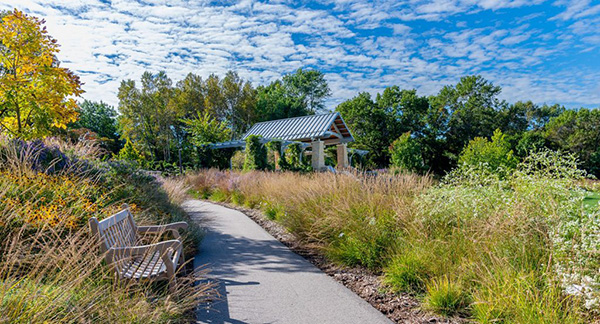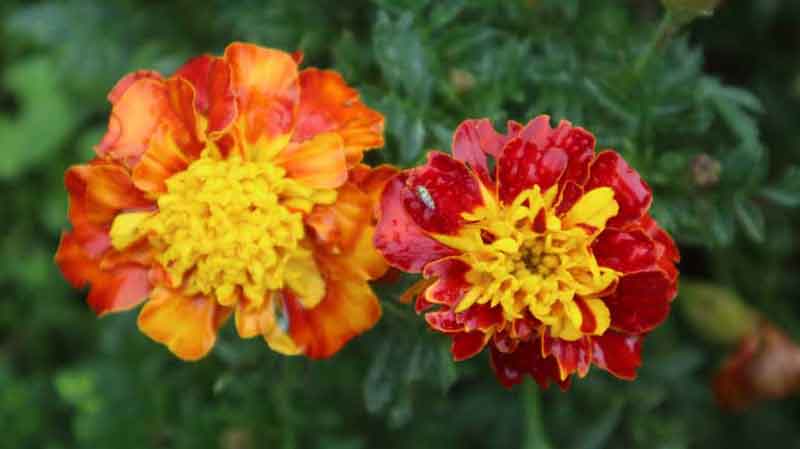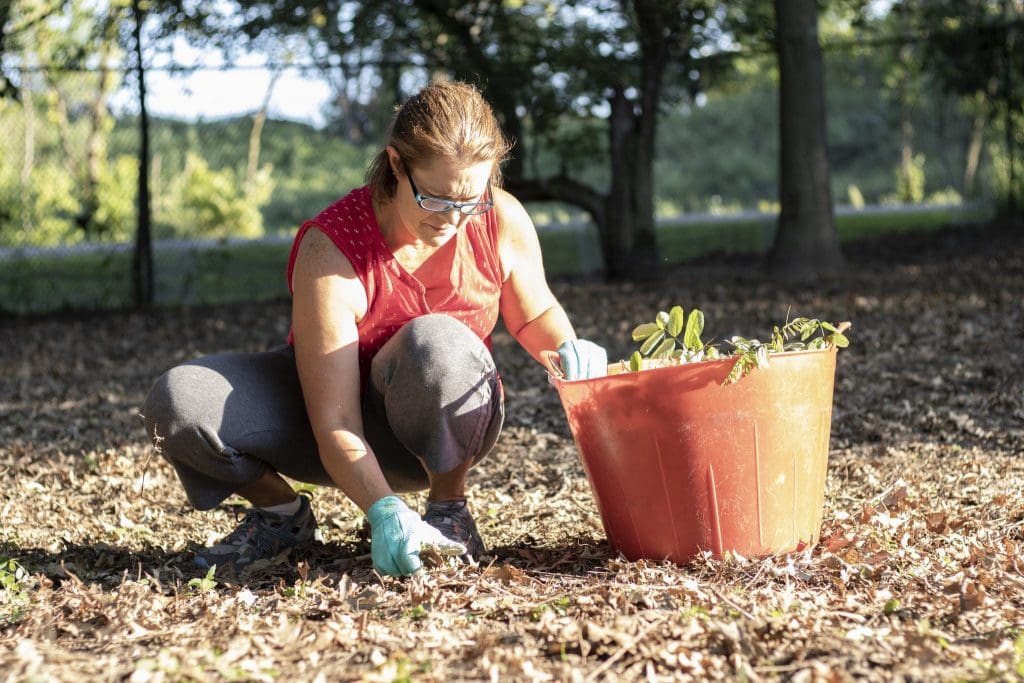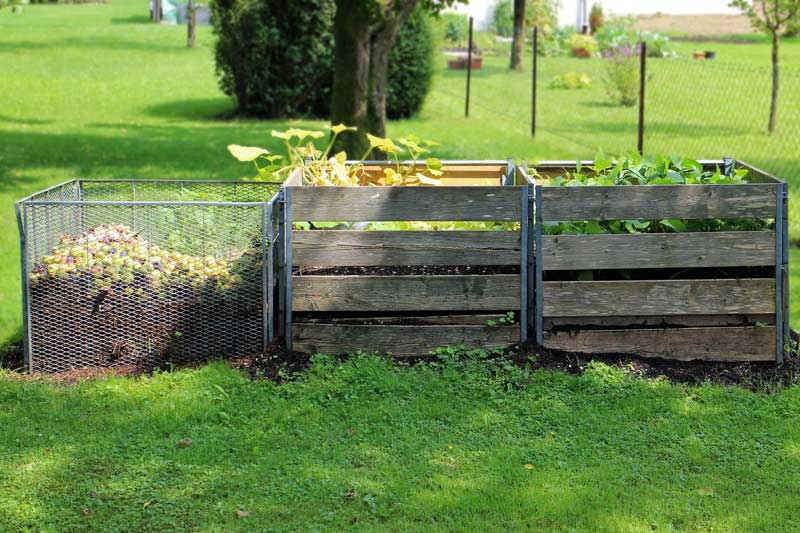The idea of growing plants in harmony with the land is not a new concept, in fact, quite the opposite is true. First Nations cultures in America have been using farming practices focused on replenishing the land far before our modern practices took root. Recently, a new trend known as Regenerative Gardening is incorporating some of these methods and combining them with sustainable approaches in a fresh and modern way.
Regenerative Gardening is a style of garden management and planting that is conscious of emissions and waste. This practice is designed to nourish the soil naturally rather than depleting it and refilling the ground with fertilizers, many of which can damage plants and the soil’s microscopic life. Soil, and the plants that grow in it, are healthier when the invertebrates, fungi, and decomposers are preserved and nourished. By trying out this savvy gardening method, you can save money and reduce your carbon emissions!
So what can you do to create your own Regenerative Garden at home? Here are five quick ideas to get you started:
Avoid Tilling
Digging up the soil isn’t simply just labor intensive, it can also break down the structure of the soil and release built up carbon. There are a few options you can use to prepare for planting without disrupting your garden bed.
Landscape cloth and mulch can help control the growth of weeds, and using a broadfork can help loosen the soil without turning it. Mowing is a safer way to get rid of unwanted plants before seeding that doesn’t require tilling. We control weeds in the Garden mainly by hand pulling which eliminates the need for chemicals and tilling, both of which can disrupt the soil ecosystem.

One of my favorite approaches is sheet composting, a process where cardboard, straw, or other safe bio-degradable materials are layered over the ground in autumn and revitalize the ground before next spring.
Feed Your Soil
One of the most important aspects of Regenerative Gardening is nourishing and giving back to the land. Treating your garden patch with compost helps add nutrients that may be missing back into your soil. In addition, it bolsters the natural communities of micro-organisms by adding organic matter back into the soil and reduces erosion by improving the structure of the soil.
Simply spread a layer 1-3 inches deep during fall or spring. You can make your own compost, or check for local vendors and farms selling it in your area.
Various plants such as legumes can additionally help add nutrients back into the soil, and leaving plant matter in your garden rather than removing it can allow for those nutrients to stick around.
In addition to recycling paper, aluminum and plastic, the Garden collects weeds and yard waste produced by our horticulturists to be recycled into nutrient rich compost.
Promote Helpful Wildlife
Many of our local crops and garden plants depend on pollination by insects like bees, flies and butterflies. Planting borders and adjacent areas with native wildflowers and grasses promotes a habitat for insects that can help your garden and landscape. Make sure to check out the Schneider Family Grand Garden in August and September for ideas!


PC: John Oates Photography
By integrating your garden into the natural habitat, you’re creating more places for local beneficial wildlife. Promoting a healthier ecosystem can mean less pests and better fruit yields. Doing this also saves effort and resources that would be spent clearing these areas. For ideas on how to combine pollinator-friendly flowers with edible plants like tomatoes, cabbages and more, check out our Partnership Gardens in July, August and September.
Be Smart About Your Plantings
A permanent garden bed is one that is not disturbed from year to year. By planning out your sowing times, you can naturally reduce weeds and improve yearly yields. There are a few good ways to help maintain this type of bed.
Succession planting is when you reduce empty garden space by planting something new whenever an older plant is harvested or pulled. Plan out when a plant will bloom or be ready for harvest, and have another one ready that will grow well to take its place.
You can also choose to plant multiple crops that support each other simultaneously, as in the case of the Three Sisters approach. More about this method can be found at the end of this blog post.
Another way to reduce empty space is by cover cropping, or planting crops that provide ground cover. Doing this allows nutrients to be brought back into the soil and weeds to be naturally suffocated. Low cover crops or mulch can be also used on garden pathways to minimize the amount of exposed ground. Cover crops planted in the fall can still provide benefits to the land when they freeze during the winter.
At the Garden, our Vietnam Veterans Garden is located on a dry hillside with southern exposure which makes it an ideal location for a xeriscape garden. This style of gardening features drought tolerant plants native to the region.
Avoid Harmful Practices
There are a few ways to help reduce pests without the need for insecticides and herbicides. Some plants naturally repel unwanted insects such as marigolds and lavender. Planting these, or using spray versions of their oils can help deter crop invaders. To eliminate weeds, plastic sheets can be used to cover and heat the soil to high temperatures, killing off weed seeds before they can sprout.


Reducing the amount of chemicals sprayed, fertilizers used, and land disturbed has many benefits. These benefits extend well beyond your garden or farm; agricultural runoff and salt based fertilizers can contribute heavily to water pollution. At the Garden, we don’t use chemical fertilizers, avoid insecticides when possible and enact other sustainable practices throughout the year.
These tips will not only help you grow a more robust garden, but will also help you rely less on costly chemical based and fossil fuel produced products. Dependence on store bought products and the removal of natural materials can be damaging to the microscopic communities hard at work in your soil. By following some of these practices, you’ll create more resources for soil communities to naturally break down your plants.
Regenerative Gardening also allows your garden to be a sanctuary for local pollinators and beneficial insects rather than a barrier, which is very important as their habitat is often fragmented and lost because of human development. By cultivating a healthy soil ecosystem and avoiding disturbance based practices, you’re reducing your own impact and taking a step to become a better steward of the land. If you would like to learn more about some of the practices talked about in this blog, check out the resources we’ve listed here:
- Home Composting: The Complete Composter by The Wisconsin Department of Natural Resources
- Gardening for Pollinators by the U.S. Fish and Wildlife Service
- Using Cover Crops and Green Manures in The Home Vegetable Garden UW Extension Horticulture
- How to Plant a Three Sisters Garden by The University of Georgia Extension
- Insect-Deterrent Plants for The Vegetable Garden by HarvestToTable
Sources













